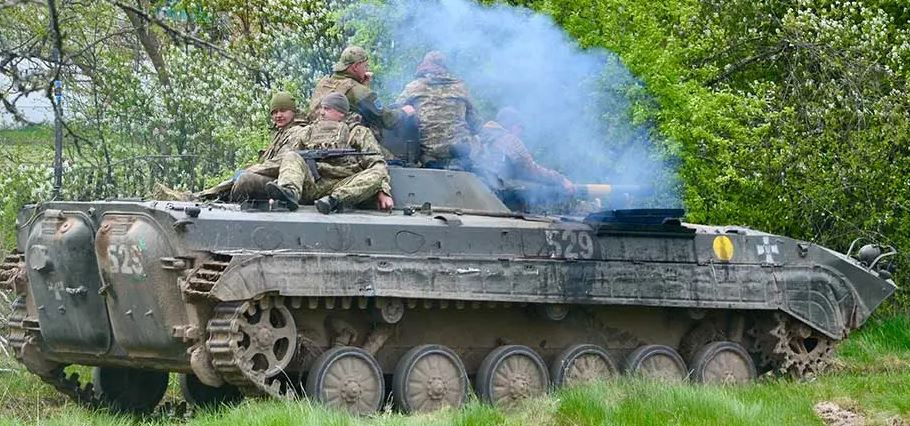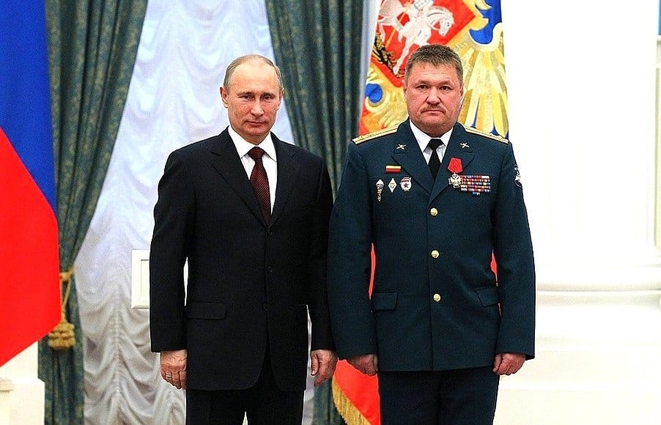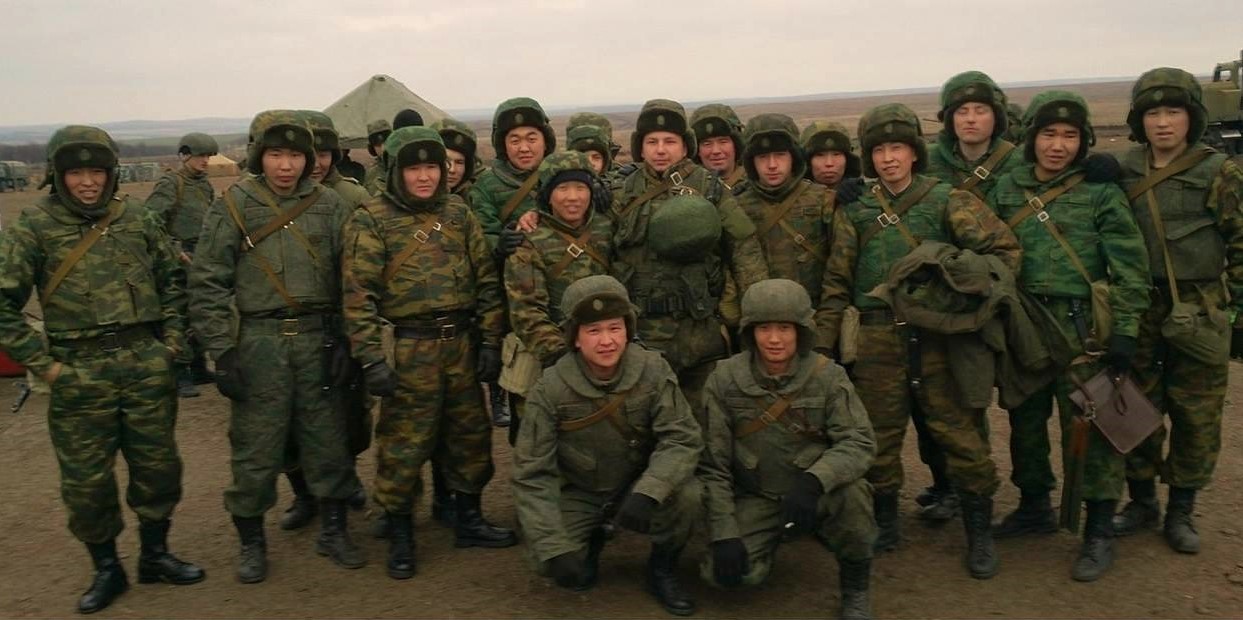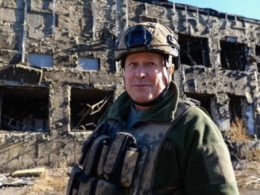The London-based Royal United Services Institute (RUSI) has published a report outlining how Russian forces have adapted their tactics in its invasion of Ukraine and the challenges this has created for the Ukrainian military.
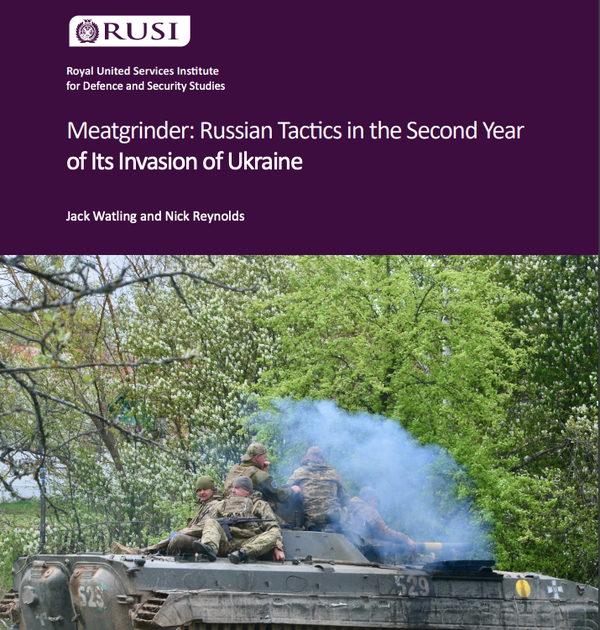
Authored by Jack Watling and Nick Reynolds, the report states that “by any reasonable metric, 2022 was a disaster for the Russian military” as a combination of uneven and inadequate training, poor force employment, insufficient forces for a sustained large-scale offensive “collectively caused the loss of many of its most capable troops and much of its modern equipment.”
Although Russia’s ground forces suffered the most, elements of the navy and airforce also experienced substantial attrition. The flow of Western weapons systems to Ukraine meant that Russian forces faced challenges they had never dealt with.
The restructuring of the Russian armed forces and the pressure from new battlefield factors have significantly forced the Russian military to change how it conducts military operations. RUSI notes that previous examinations of the Russian military have “focused on the parsing of the Russian doctrine”; however, the relevance of the doctrine and how the Russian military fights are “becoming increasingly uneven.” For Ukraine and its allies to calibrate their ongoing operations, it is essential that Russia’s evolving tactics are understood, and “although the Russian military may change considerably before its forces directly confront NATO, the evolution is worth tracking.”
The report seeks to describe how Russia is currently carrying out its combat operations in Ukraine; it “does not outline in detail which of these tactics are more or less successful, or describe Ukrainian tactics, as these are operationally sensitive.” RUSI gathered data for its report primarily from interviews with and observations of Ukrainian military units in April and May 2023. Those interviewed had a wide range of experiences, including the defense of Kyiv, Chernihiv, Kharkiv, Bakhmut, and Avdiivka, and also participated in offensive operations in Kherson and Kharkiv. The report divides the descriptions of Russian tactics by combat function, spanning infantry, engineers, artillery, armor, electronic warfare, air defense, aviation, and command and control.
Infantry
The Russian military's infantry tactics have undergone a considerable evolution, with the most notable shift being the move from mechanized Battalion Tactical Groups (BTGs) to four types of infantry units:
- disposable
- line
- assault
- specialized.
This change reflects Russia's adaptation to its operational challenges and deficiencies in its earlier combined arms approach.
In essence, the disposable infantry, often undertrained conscripts or civilians, act as cannon fodder, serving as the first line of assault and taking the brunt of the casualties. "Disposable platoons are assigned to those avenues of approach to Ukrainian positions that are deemed to offer some cover and thus could prove viable." These disposable units are used to probe Ukrainian defenses and identify points of weakness. Disposable units are drawn from three principal sources:
- conscripts from the so-called Luhansk and Donetsk People’s Republics
- prisoners drafted by the Wagner Group
- under-trained mobilized Russian civilians.
Ukrainian troops report that they often “appear to be under the influence of amphetamines or other narcotic substances," with material recovered from the battlefield indicating that these are commonly taken in liquid form.
Line infantry typically engages in supporting tasks and defensive activities. Assault infantry, on the other hand, are trained for offensive operations. They tend to "advance in company strength with the support of armor" and conduct the main assaults on enemy positions, usually after the disposable infantry have probed for weaknesses.
Specialized troops, which include snipers, artillery spotters, and support weapon operators, add another layer of complexity to Russian military tactics. They often replace disposable troops in dug foxholes and prepare firing positions, establishing posts for observation, sniping, and heavy weaponry.
In defense, Russian forces hold strong, often fortified positions. "Russian positions often include an extensive range of well-prepared fighting positions... reliably fortified within 12 hours." They use minefields and obstacles to slow down attackers and call for heavy defensive artillery fire. Where possible, positions are reinforced with concrete, although this is rarely the case in the first line. In addition, they “make limited use of decoy positions to obscure the layout of their actual defensive positions and fire plan”
Although Russian defense lines are significant and the units holding them post sentries, “the Russians make very little use of observation or listening posts pushed forward of their main positions.” Instead, active reconnaissance is primarily carried out by unmanned aerial vehicles (UAVs).

RUSI states that Russia’s
“force structure is a cynical but coherent solution to the problem facing the Russian Ground Forces; they are able to mobilize large numbers of personnel, but most units are poor quality and suffer from a chronic lack of training capacity that might otherwise rectify the problem.”
The think tank notes many reports of increased desertion and low junior leadership, leading to fractured unit cohesion under pressure. This could make Russian units more susceptible to underperformance if forced into dynamic action.
Overall, the critical and yet most elusive variable in assessing the strength of the Russian forces is morale. RUSI states that “generally, it is low, with a rise in prosecutions for desertion, observed instances of wounded comrades being abandoned, and very little depth of junior leadership.” To complicate matters, personnel are rarely rotated, and there is “considerable weariness across the force.” While in theory, this should make Russian units brittle, in practice, it appears they can “take very heavy punishment without collapsing.”
Ukrainian forces need to learn hard lessons as they fight Russian invasion
Engineers
Engineers are the least discussed element of the Russian forces, and while much of the Russian forces have performed poorly, engineers have shown good performance overall.
The forces are organized into brigades, each comprising two engineer companies:
- one dedicated to mining
- and the other to force protection engineering.
Drawing heavily from Cold War-era methods, Russian force protection engineering encompasses a system of multi-layered defensive lines. The frontline consists of infantry fighting positions, followed by trenches and concrete firing posts. Additionally, numerous obstacle belts featuring anti-tank ditches, dragons’ teeth, and wire track entanglements add layers of protection to these positions. Not to be overlooked, the establishment of subterranean and concrete-fortified command posts further reinforces the defense system.
Minefields also constitute a significant part of the Russian defense line. These minefields exhibit no discernible pattern and are rarely marked, incorporating a mix of anti-tank (AT) and anti-personnel (AP) mines. Since Russia isn't bound by the 1997 Ottawa Treaty, Russian forces frequently employ victim-activated AP mines.
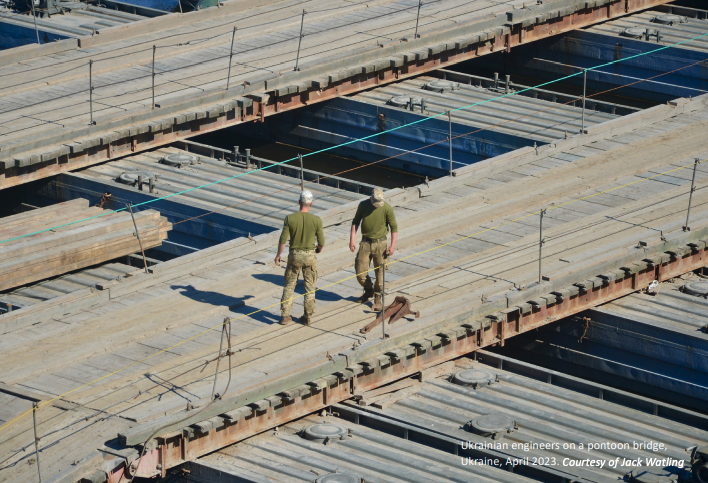
Highlighting proficient engineering skills, the rapid emplacement of bridges is another cornerstone of Russian operations. These bridges, often held at the Combined Arms Army level, are deployed to support operations. Such is their confidence in the speed of bridge construction that Russian forces sometimes destroy bridges, betting on the greater disruption caused to Ukrainian forces.
Artillery
Artillery remains at the heart of the Russian military, according to RUSI. Initial deployments saw each Battalion Tactical Group (BTG) supported by one to two batteries of howitzers and a Multiple Launch Rocket System (MLRS) battery. As of summer 2022, these elements were consolidated into artillery tactical groups to offer focused support and maintain an efficient counterbattery fire mechanism.
The rate of fire observed in the first quarter of 2023 oscillated between 12,000 and 38,000 rounds per day, with an observable reduction in the number of days when Russian fire exceeded 24,000 rounds. The caliber of artillery has also shifted, with a decrease in the usage of 152-mm fire and an increase in 120-mm mortar fire.
A significant consideration for Russia is ammunition availability. While there has been a notable ability to amass ammunition, logistical disruptions have led to adjustments in the fire control approach. The Russians have adopted new fire tactics, which include strategies like "Nomadic Cannon," "Fiery Carousel," "Roaming Platoon," and "Umbrella Cover," reflecting a shift towards timing and mobility.
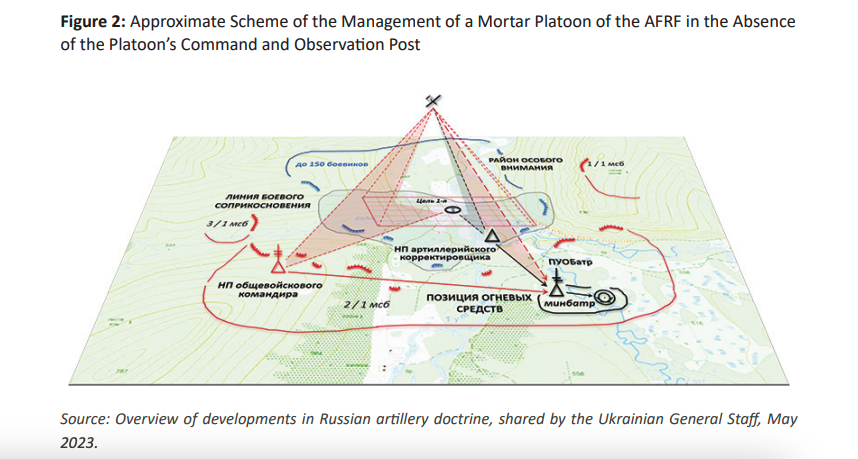
Artillery fire is used not only for striking Ukrainian defensive positions but also to deter assaults. The common tactics include saturating areas with fire where assaults are being prepared or after withdrawing from a position being assaulted. There are indications of munitions shortages, with significantly fewer MLRS launches in recent months. However, there is an observed increase in the usage of Krasnopol laser-guided 152-mm rounds and Lancet loitering munitions, indicating a shift towards precision strikes.
The refinement of the Russian Reconnaissance Fires Circuit (the "kill chain") has been a significant adaptation, making fire support for maneuvering forces more responsive and flexible. The use of Orlan-10s for information gathering and target acquisition has made artillery engagements faster, with times as short as 3-5 minutes from these systems.
A previously underappreciated aspect of Russian fire reconnaissance, the Strelets system, allows multiple feeds from sensors or detections by reconnaissance troops to be integrated into digital fire control. Although not widely used initially due to setup issues and poor training, it is now prevalent among specialist infantry in the VDV and Wagner formations.
As the conflict continues, Russia's artillery strategies and systems will likely continue to evolve in response to the changing battlefield conditions and resource availability. This increased precision and efficiency could pose a significant threat to Ukrainian forces.
Armor
During the conflict, the Russian strategy regarding armored tanks has seen a marked evolution, particularly due to the significant losses encountered earlier. Presently, tanks are being deployed to supplement artillery capabilities in sectors where there is insufficient allocation of air defenses to sustain a robust logistics architecture. While the low angle of indirect fire makes tanks an inefficient form of artillery, they compensate by occupying positions that are untenable for artillery due to their superior protection and reduced vulnerability to counter-battery fire.
Additionally, tanks have been repurposed as highly accurate fire support assets, capable of standing off at distances of 2 km and using their advanced optics to identify and neutralize enemy firing positions. Interestingly, despite facing criticism online, older tanks such as the T62 and T55 have been utilized much in the same way as infantry fighting vehicles (IFVs), offering an enhanced range, improved protection, and a more potent kinetic effect.
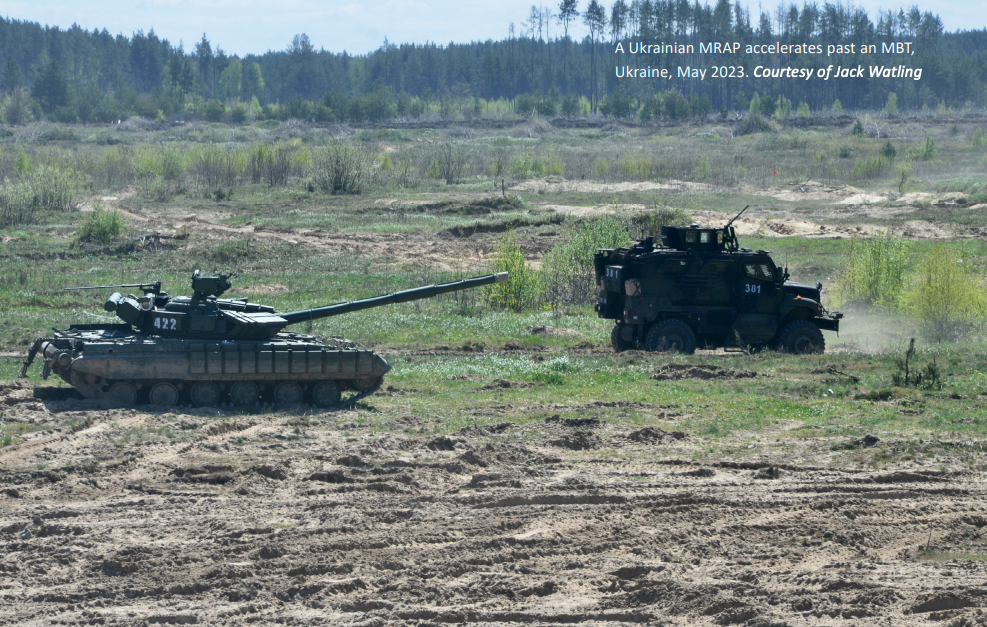
Tanks have also been assigned to conduct raids during enemy troop rotations, a strategy to increase the chances of inflicting casualties. These raids, typically performed under the cover of night, frequently employ the T80BV tank due to its superior thermal optics.
Efforts have also been made to modify Russian tanks to reduce the effectiveness of anti-tank guided missiles (ATGMs). The use of anti-thermal material and alterations to the engine deck to modify the heat plume from the vehicle's exhaust and engine have been observed. Additionally, conducting operations during times of thermal crossover - dusk and dawn - renders the tanks harder to detect.
In urban warfare, where typical engagement distances are often significantly reduced, the use of tanks deviates from the aforementioned patterns. Here, tanks provide crucial support in suppressing urban structures and facilitating rapid breaching of buildings. Older models of tanks are often preferred in this role due to the urban environment offering a limited tactical advantage for modern tanks equipped with advanced optics and multispectral concealment.
Tank-on-tank engagements have become infrequent, and when they do occur, they are usually within a range of 1,000 m. Speed has emerged as the determining factor in these engagements. Although the Russian explosive reactive armor (ERA) has proven effective against most anti-tank systems, Ukrainian forces have found that immobilizing a tank's tracks is an effective countermeasure, as it often leads the crew to abandon the vehicle.
Electronic warfare
Electronic warfare remains a crucial element of Russian combat strategies. In 2022, Donetsk and Luhansk had a high density of electronic warfare (EW) systems. The trend now is that Russian forces use approximately one major EW system for every 10 km stretch of the front, typically situated about 7 km from the frontline. These platforms primarily focus on controlling and countering unmanned aerial vehicles.
Interestingly, the Russian crews show little interest in synchronizing these effects with other operations or in preventing overlap in their effects. Instead, when an EW team is deployed, they are given free rein to aggressively attack Ukrainian systems.
Among these, the Shipovnik-Aero system is proving particularly potent due to its low signature and the capability to further camouflage this by imitating other emitters and communication devices. It also has a sophisticated array of methods for disabling UAVs.
Russian EW troops also serve another crucial role - interception and decryption of Ukrainian military communications, an area in which they are proving highly adept. Instances have been reported where the Russian headquarters provided advance warning to its units of incoming artillery strikes based on intercepted Ukrainian communication. It was observed that the Russians could capture and decrypt transmissions from Motorola radios with 256-bit encryption almost in real-time, most likely using the Torn-MDM system.
In addition to large systems like the Shipovnik-Aero, the Russian military is incorporating EW effectors at all levels of its units, which includes counter-UAV capabilities for each platoon. Such counter-UAV capabilities typically comprise directional jammers and arrays to take control of UAVs. Ukrainian forces now believe that each platoon within Russian infantry units has access to at least one of these systems. An additional EW counter-UAV measure includes deceptive tactics that generate many faux UAVs on enemy systems and replicate ground control stations. While the Russian military is yet to fully leverage this capability, such tactics are becoming increasingly common.
Air defense
The efficacy of Russian air defense systems has seen marked improvements. Despite initial coordination and planning failures that resulted in Ukraine successfully striking Russian formations in the first week of the war, Russia quickly enhanced the robustness of its tactical formations. This rapid adjustment led to Ukraine's Air Force being effectively denied airspace access.
However, the Russian air defense systems, though numerous and dispersed, proved susceptible to complex attacks involving anti-radiation missiles and electronic warfare effects. Moreover, these scattered systems could not intercept a range of threats, including guided multiple launch rocket systems (GMLRS), which were used to decimate Russian command and control, as well as logistics, in July 2022.
From autumn 2022 onwards, Russian air defenses have become significantly more robust. Complexes of SA-21 and SA-23
systems have been positioned around vital logistical and C2 hubs. Crucially, SA-15 and SA-22 systems appear connected to their fire control radars, substantially improving the situational awareness and tracking data quality of these short-range air defense (SHORAD) systems.
This has led to two main outcomes.
- Firstly, the long-range radar, combined with systems such as the 48Ya6 "Podlet-K1" all-altitude radar, has effectively denied airspace to Ukrainian aviation.
- Secondly, Russian SHORAD systems have greatly enhanced their point defense efficiency. Alongside the successful interception of most high-speed anti-radiation missiles (HARMs) fired by Ukrainian aircraft, the Russian air defense network now intercepts a significant number of GMLRS munitions. The exact interception rate varies based on the target's depth and the quantity of GMLRS launched, which makes giving a precise interception proportion challenging.
Russian air defenses perform optimally when properly connected and provide an effective defense against current threats. However, it is worth noting that Russian crews have consistently struggled to respond appropriately to emerging threats and to maintain effective blue force tracking, leading to several instances of friendly fire.
The effectiveness of Russian long-range surface-to-air missiles (SAMs) against the Ukrainian Air Force continues to be notable. The farthest recorded shoot-down of Ukrainian aircraft occurred at 150 km, with the aircraft flying at less than 50 feet. This seems to have been prompted by a 48Ya6 "Podlet-K1" all-altitude radar with the air defense missile locking onto the target post-apex.
The strength of the air defense network is also reinforced by continuous medium-altitude combat air patrols by Russian Su-35Ss. These aircraft, armed with R-37 missiles, pose a substantial long-range threat. The Ukrainian Air Force reports the farthest recorded kill by a Russian R-37 at 177 km. Although the aircraft operate separately from the air defense system, the combined threat from long-range ground-based anti-air capabilities, medium-altitude look-down radar, long-range air-to-air missiles, and effective point defense systems creates an extremely lethal air combat environment.
Therefore, most Ukrainian fast air and attack aviation engagements use S-7 rockets, fired in a lofted profile from above Ukrainian positions.
Aviation
Despite the increased density and integration of Russian air defenses, the Aerospace Forces (VKS) remains cautious about entering Ukrainian airspace. Russian aviation primarily relies on stand-off attacks. For instance, aviation-launched cruise missiles have become the primary stand-off method used for the long-term targeting of Ukrainian sites. The Tu-95 fleet continues to be the primary asset for this purpose. Interestingly, a large number of aircraft are deployed for these strikes, with only a small proportion firing the munitions.
This tactic emerged as a response to the limited number of strikes possible per month, which allowed Ukrainian defenses substantial warning time through detecting the take-off of these aircraft. Given that the Russian industry can manufacture about 40 long-range missiles of varying types per month, the VKS employs large numbers of aircraft to diversify the potential threat axes. Shahed-136 UAVs are used as pathfinders to spot gaps in Ukrainian air defense, and then a small number of aircraft are selected to fire the missiles to maximize their chances of reaching their targets.
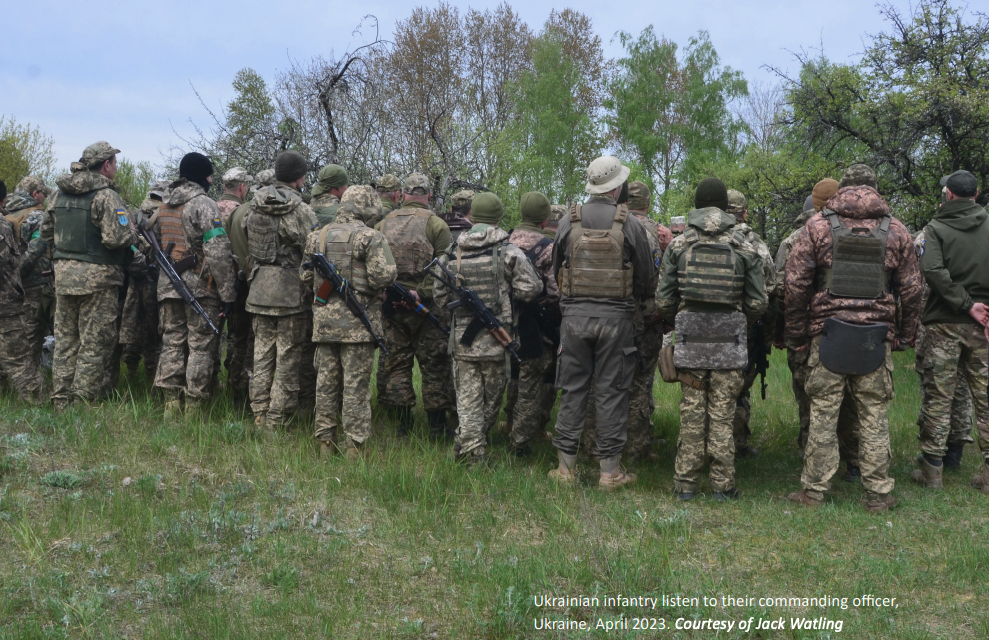
Stand-off effects are also the primary method the VKS employs to strike in tactical depth, primarily using FAB-500 bombs with glide kits launched from Su-35Ss. With a potential range of up to 70 km, these munitions suffer from relatively poor accuracy.
The Armed Forces of Ukraine (AFU) have noted that the VKS holds large stockpiles of FAB-500s and is systematically equipping them with glide kits, potentially offering many available heavy bombs. So far, the use of these munitions has been minimal, albeit persistent. However, these strikes are expected to provide valuable data for the refinement of glide kits and the calculation tables used to determine their release, which could improve their accuracy over time. If deployed more intensively, these munitions could begin to be used against battlefield targets.
Another method of stand-off strike is the lofting of S-8 unguided rockets from both fast air and aviation assets on a long arcing trajectory towards distant targets. Initially, this technique, which emerged soon after the invasion, was seen as inefficient and inaccurate. However, when deployed at ranges of about 12 km against area targets like Ukrainian ground formations preparing for attacks, the effect has been sufficient to disrupt these formations and thwart attacks.
While this method is used across the front, its effects are most pronounced in areas where the Russians lack ground-based fires, as the technique's responsiveness can increase the threat to Ukrainian troops with minimal notice.
Another application of Russian aviation is the deployment of electronic warfare (EW) effects, with about eight Russian Mi-17s equipped with EW suites operating in southern Ukraine. These are effectively used for electronic attacks against Ukrainian command and control, and due to their altitude, they can reach further than comparable ground-based systems.
The VKS remains somewhat puzzling in this conflict. It has significant firepower and a large fleet of available aircraft and munitions, but its presence is limited.
The dilemma for Ukraine is that Russian fast air, particularly its large attack aviation fleet, could inflict heavy damage if used in large numbers, albeit at a high cost. As long as this potential threat exists, it is bound to influence Ukrainian offensive operations, as advancing Ukrainian forces will likely encounter similar issues as the Russians in advancing their air defense coverage.
The strategic objective for both sides is to achieve sustainable operations at medium altitudes beyond the engagement ceiling of man-portable air-defense systems (MANPADS). The side that can maintain operations at this altitude will be better positioned to identify targets and bomb with greater range and accuracy. Currently, the VKS is deterred by the surface-to-air missile (SAM) threat from adopting such a profile over the Ukrainian frontlines.
Being able to do so would grant the VKS greater control and effectiveness in their operations, allowing them to identify and strike targets with increased range and accuracy. This would inevitably put Ukrainian forces at a substantial disadvantage and could potentially alter the course of the conflict.
Therefore, controlling the medium altitude airspace remains a crucial objective for both sides in this conflict, as the outcome could decisively affect their tactical and strategic positions.
Command and Control
Following Ukraine's GMLRS strikes in July 2022, Russian headquarters were moved more than 120 km from the front line. This initially posed significant tactical challenges, but these have largely been overcome. Now, the Russian headquarters are more dispersed and connected through physical wiring, making use of the robust Ukrainian telecommunications network on occupied territories.
Orders from these headquarters to forward Command Posts (CPs) are primarily transmitted through microlinks
, using relay vehicles to increase their range. This approach significantly lowers the detectability of the Russian forces. Higher-level communication from brigade to battalion CPs is typically established via microlink relays or field cables, laid within a day of setting up a CP.
Contrastingly, communications from the battalion CP downwards often depend on radios or analog military systems and are usually unencrypted, likely due to the limited training of many force components. The only exceptions are seen among reconnaissance units and artillery observers using systems like Strelets and Azart.
Regarding inter-unit cooperation, Russian forces continue to struggle with horizontal integration in their command and control structures. There's adequate integration of firepower between combined arms army assets, brigade artillery, and battalion mortars, demonstrating a reasonable level of coordination between echelons.
This situation presents a significant limitation in Russian defensive operations, creating seams that higher echelons must cover with organic assets. The integration of VKS capabilities remains centralized, tied primarily to the Combined Arms Army CP.
Priority assistance for the Armed Forces of Ukraine
As Ukraine undertakes offensive operations, it is crucial to consider the tactical challenges that the AFU will face.
Ukrainian forces face multiple challenges. Russian infantry, backed by high volumes of fire, air defenses, force protection engineering, and mobile command and control disruption, pose serious threats. Although Russia's defensive operations are positional, their multi-layered defenses and the use of mobile reserves complicate Ukraine's mission.
Ukraine will require significant combat power to penetrate Russian defenses, given the depth and extent of Russian fortifications. Training for assault operations against fortified positions should be a key focus for Ukrainian troops, alongside the indirect fire duel, which currently favors the superior numbers of Russian artillery systems.
The priority for Ukraine's international partners should be providing detection systems for directing counterbattery fire.
The use of .50 caliber heavy machine guns by Ukrainian forces has proven effective but would benefit from the addition of automatic grenade launchers like the Mk. 19 GMG.
Mine clearing and breaching are also critical areas requiring support, particularly regarding minefield reconnaissance and obstacle breaching.
Tactics will be pivotal in Ukraine's success on the battlefield, including overcoming the challenge of fortified positions protected by minefields and supporting fires.
Ukraine faces challenges such as deploying its best units along the extended front line in eastern Ukraine and processing a surge of new recruits with limited military training.
Collective training for units, focusing on fire control for direct and indirect fire support units, effective tactical command and control, and assault tactics are vital. This requires understanding and practicing battle drills under realistic conditions. Building effective assault units with common tactics also requires company-level collective training.
Equipment availability, serviceability, and protection from Russian reserve forces' counterattacks are key concerns. Disrupting enemy counterattacks or strikes from artillery and aviation would be greatly assisted by destroying enemy command and control infrastructure, requiring support in electronic attacks and using tools such as UAVs.
RUSI concludes that while Russian forces have often been seen as tactically inept and technically deficient, it's essential not to underestimate their capabilities. Despite some notable deficiencies in offensive capacities, they have shown adaptability and effectiveness, particularly in defensive operations. However, these adaptations are often reactive rather than proactive, highlighting a failure to anticipate new threats.
There's a systematic struggle to coordinate different functions within the Russian military, and their callous approach towards personnel often leads to underperformance due to poor unit cohesion.
Meanwhile, Ukrainian troops, with better morale and often superior training, continue to face numerous tactical challenges in reclaiming their territory. Overcoming these challenges requires targeted support from international partners and a focus on:
- tactical proficiency in training;
- force generation;
- and equipment maintenance.
To overcome complex Russian fortifications, Ukraine needs a multi-pronged approach involving shaping, breaching, and exploiting.
Therefore, it is crucial for Ukraine's partners to prioritize establishing sustainable training processes for Ukrainian forces. Despite Ukraine currently having the initiative, the adapting Russian military necessitates constant vigilance and no room for complacency.
Related:
- Ukrainian forces need to learn hard lessons as they fight Russian invasion
- Ukrainian military strategy legend explains how Ukraine can win the war

